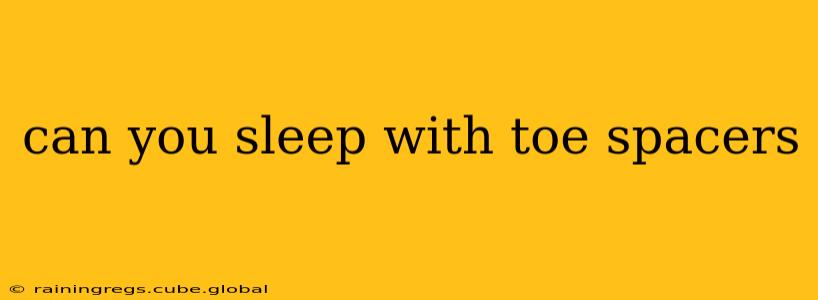Can You Sleep With Toe Spacers?
The question of whether you can sleep with toe spacers is a common one, and the answer isn't a simple yes or no. It depends on several factors, including the type of toe spacer, your personal comfort level, and any underlying foot conditions you may have. Let's delve into this topic more thoroughly.
What are Toe Spacers?
Toe spacers are devices designed to separate the toes, aiming to alleviate discomfort and potentially correct certain foot alignment issues. They come in various materials, designs, and levels of rigidity. Some are soft and flexible, while others are more firm and structured. The purpose of using toe spacers varies, ranging from addressing bunions and hammertoes to improving overall foot health and comfort.
Can You Sleep Comfortably With Toe Spacers?
Many people find that they can sleep comfortably with toe spacers, particularly those made from soft, flexible materials. These gentler options often conform to the shape of your foot, minimizing discomfort during sleep. However, more rigid toe spacers can be uncomfortable and even painful to sleep in, especially for extended periods.
The key is to find a toe spacer that suits your needs and comfort levels. Experiment with different types and materials to find one that doesn't impede your sleep. If you're unsure, start by wearing the spacers for shorter periods during the day before attempting to sleep with them.
What are the Potential Benefits of Sleeping With Toe Spacers?
Some individuals report experiencing benefits from sleeping with toe spacers, particularly if they're using them for therapeutic purposes. These potential benefits might include:
- Improved alignment: Consistent use of toe spacers can help correct minor toe alignment issues over time, potentially leading to more comfortable sleep and less foot pain.
- Reduced inflammation: For those suffering from conditions like bunions or hammertoes, toe spacers can help reduce inflammation and pressure on affected areas, potentially improving sleep quality.
- Increased blood circulation: Separating the toes can improve blood circulation in the feet, promoting overall foot health and potentially reducing nighttime discomfort.
However, it's crucial to remember that these potential benefits are not guaranteed and may vary from person to person.
What are the Potential Drawbacks of Sleeping With Toe Spacers?
While many people find toe spacers beneficial, there are potential drawbacks to consider, especially when sleeping:
- Discomfort: Rigid or ill-fitting toe spacers can cause discomfort and even pain during sleep, leading to poor sleep quality.
- Skin irritation: Some materials can irritate the skin, particularly if the spacers are worn for prolonged periods.
- Interference with sleep: Any discomfort or feeling of pressure from the spacers can interrupt sleep, potentially leading to fatigue and reduced well-being.
What Types of Toe Spacers are Best for Sleeping?
If you intend to sleep with toe spacers, opting for soft, flexible gel or silicone options is often recommended. These materials are usually more comfortable and less likely to cause irritation or discomfort during sleep. Avoid rigid or hard plastic toe spacers for nighttime use.
Should You Consult a Doctor Before Sleeping With Toe Spacers?
If you have any underlying foot conditions, such as bunions, hammertoes, or plantar fasciitis, it's essential to consult with a podiatrist or doctor before using toe spacers, especially for extended periods like overnight. They can assess your specific needs and recommend appropriate treatment options.
In conclusion, sleeping with toe spacers is a personal decision. Consider your comfort level, the type of spacer you're using, and any underlying foot conditions. If you experience discomfort or pain, discontinue use and consult a healthcare professional. The potential benefits should always be weighed against the potential drawbacks before making a decision.
